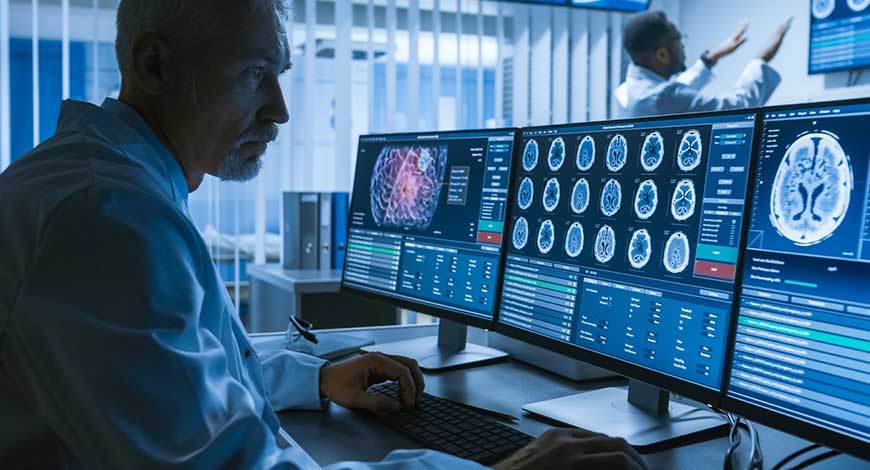Trends
How AI is playing crucial role in medical imaging

Artificial intelligence (AI) is all the rage in many aspects of our lives, from composing students’ essays to designing new fashions. Its use in medicine has enabled physicians and other trained health professionals to make more timely, accurate diagnoses and guide effective treatment plans, from patient triage to detecting abnormalities during diagnostic procedures. It is especially good at analyzing X-rays, for example, and has long been used in medical imaging, leading to greater accuracy and improved patient outcomes.
However, there’s a significant difference between using AI in a highly regulated sector like medical imaging and in other, unregulated applications of the technology, like ChatGPT, other recent open AI models, or other services that do not involve a health care professional.
Therefore, public policy should not paint all AI applications with the same broad brush. Congress should recognize, and leave alone, regulatory oversight that is working well to balance safety, security, and innovation, and instead focus on creating any needed oversight where AI applications are creating new, unmitigated risks.
Radiologists and other trained health care providers use advanced AI-enabled medical imaging devices to quickly analyze vast amounts of data, more effectively detect abnormalities, and interpret complex patterns to help inform their decision-making for patients. The belief that “AI will replace radiologists” is a myth. In fact, radiologists who utilize regulated AI applications are transforming radiology and harnessing this technology to both make their jobs easier and improve patient care and outcomes.
During my last colonoscopy, for example, the gastroenterologist used a new AI tool called “GI Genius” to help detect abnormalities such as polyps or adenomas (precancerous lesions) in the colon in real-time. The FDA approved it in 2021 based on a trial in 700 subjects undergoing a colonoscopy for colorectal cancer screening. Colonoscopy plus GI Genius was able to identify lab-confirmed adenomas or carcinomas in 55.1 percent of patients compared to 42.0 percent of patients with standard colonoscopy.
My gastroenterologist said that he occasionally found polyps that GI Genius missed, and vice versa, and that the module is getting smarter and more accurate as more examples of colonoscopies are being fed into its database.
Such tools are a win for everyone.
For years, the Food & Drug Administration (FDA) has exercised regulatory authority over AI medical imaging devices, ensuring they are held to the same rigorous, stringent level of regulation as the rest of the medical device landscape. FDA’s oversight of AI medical imaging devices includes both a pre-market review process to assess safety and effectiveness as well as robust post-market monitoring that ensures ongoing performance of devices after they’ve been approved for use. Before approval, all AI medical imaging devices must be reviewed for safety and effectiveness by the FDA, and the agency’s strict labeling requirements help ensure proper use by providing detailed information for the intended user. Manufacturers of AI-enabled medical imaging devices must also maintain a quality-management system that meets FDA requirements.
To date, the FDA has authorized more than 500 AI medical imaging devices, helping to revolutionize clinical radiology while greatly improving patient care and outcomes. Having served at the Agency for 15 years and studied it for another 30, I am confident in the FDA’s ability to continue playing a strong regulatory role in overseeing AI in health care and medical imaging.
As policy debates over regulating AI continue in Washington, it is vital that policymakers clearly distinguish between the regulated use of AI in medical imaging from other AI applications that may or may not need regulatory guardrails. Adding additional regulation to the use of AI in medical imaging and health care — where effective regulation already exists — runs the risk of slowing innovation and undermining patient care.
The FDA has done an exemplary job regulating the application of AI in medical imaging, carefully balancing the need for innovation with oversight to deliver safety and improved care for patients. The FDA should continue to be responsible for the oversight of AI in medical imaging while Congress, regulators, and product developers in other industries address the range of regulatory concerns in other forms and applications of AI. The Hill













